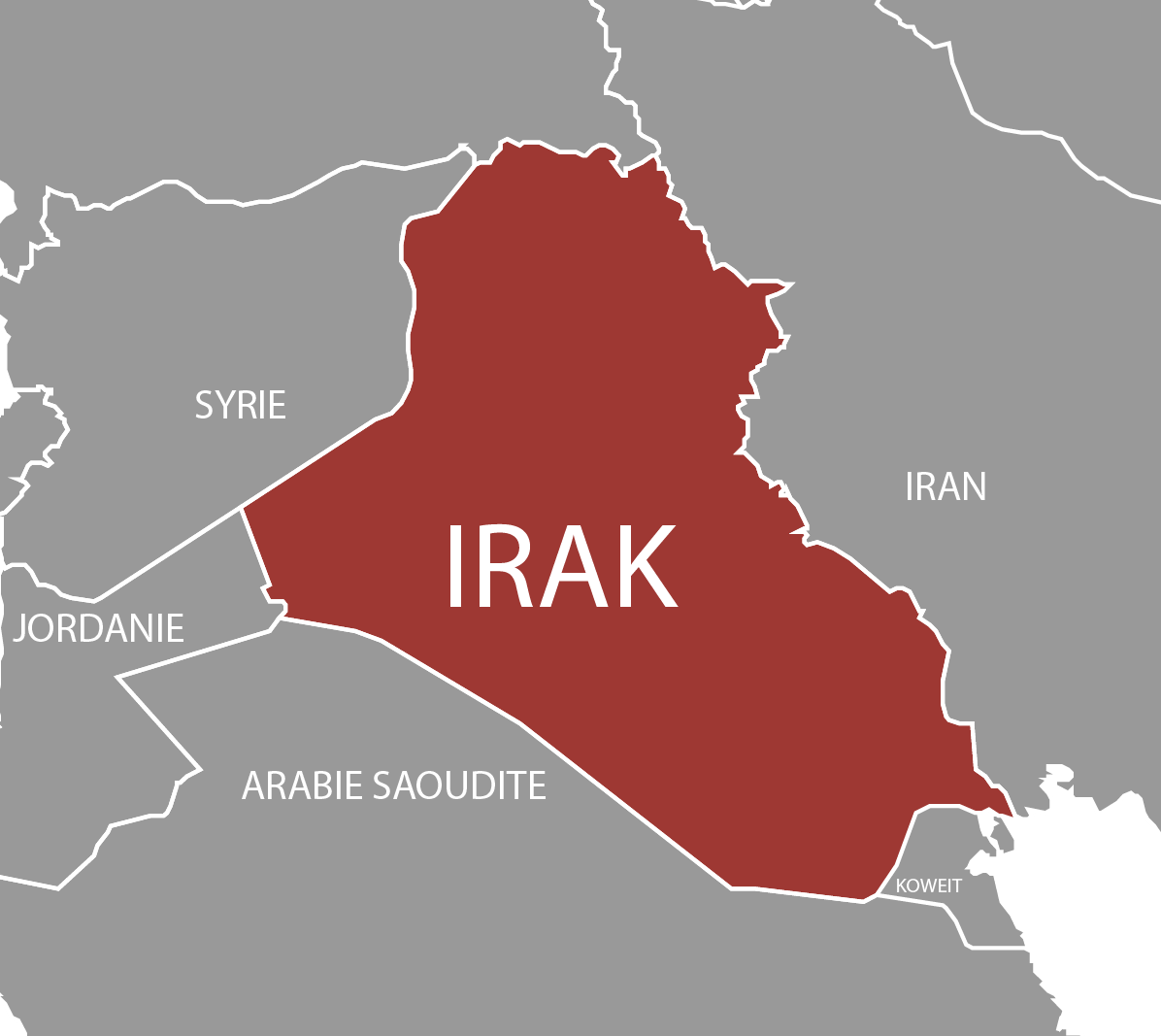

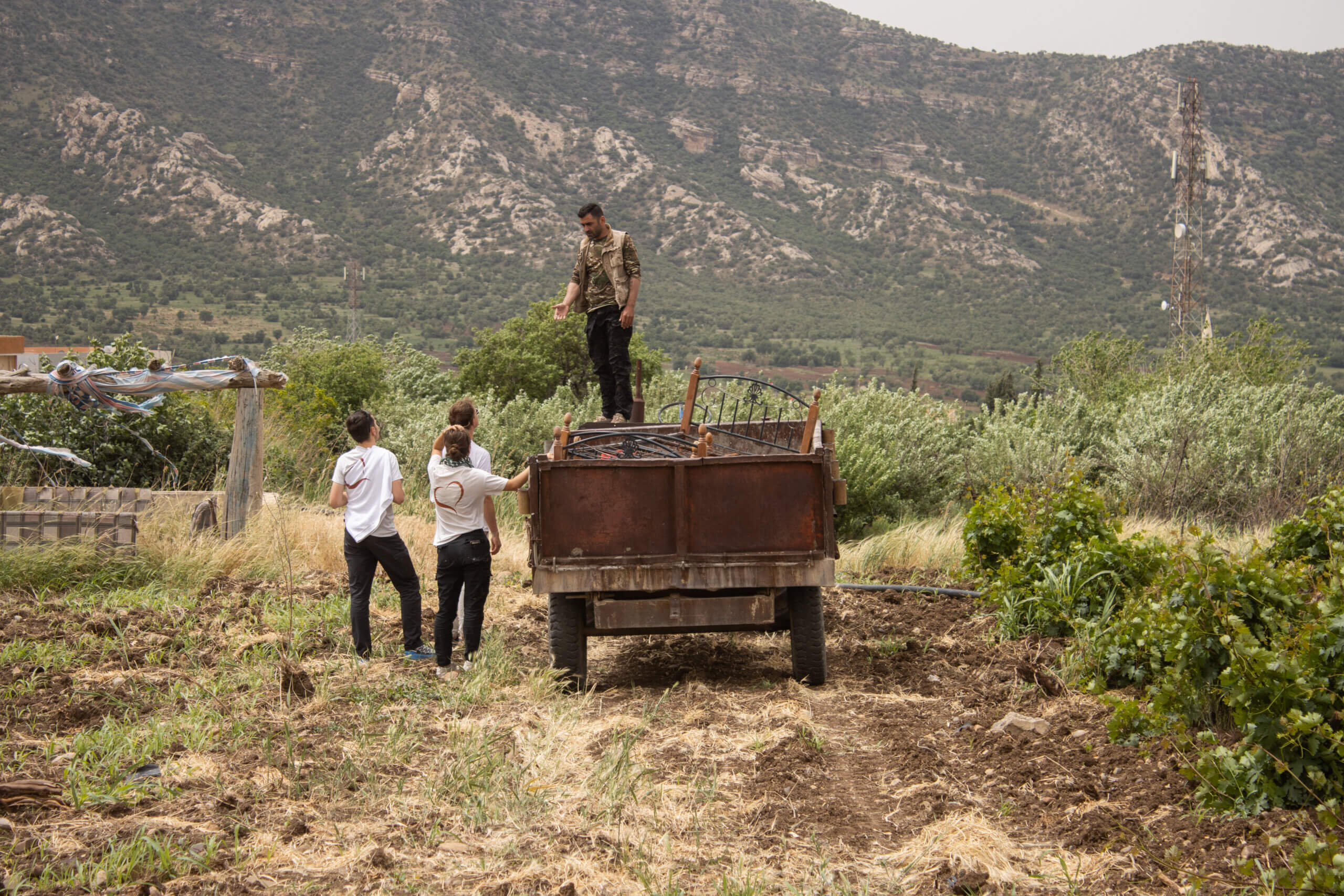
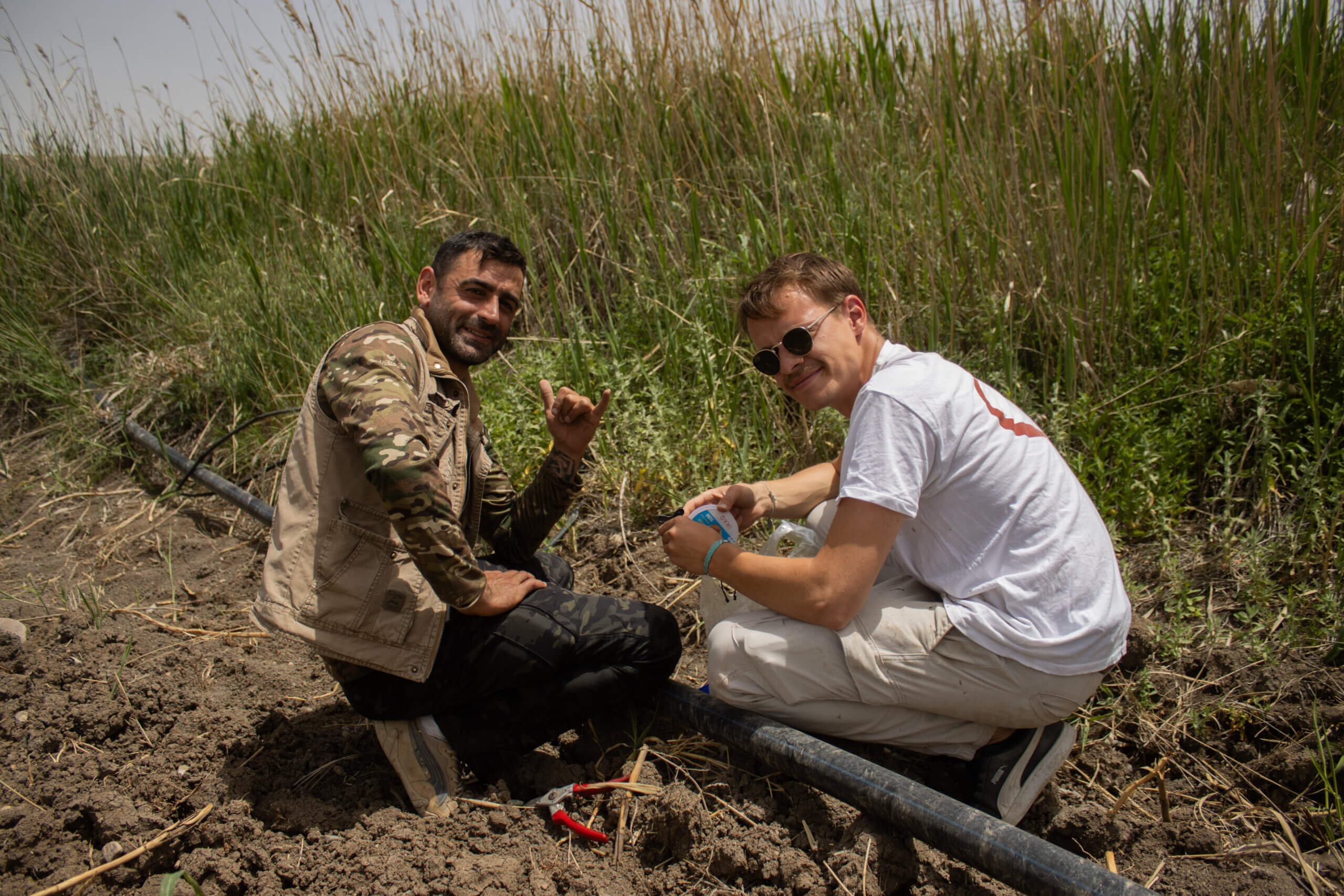
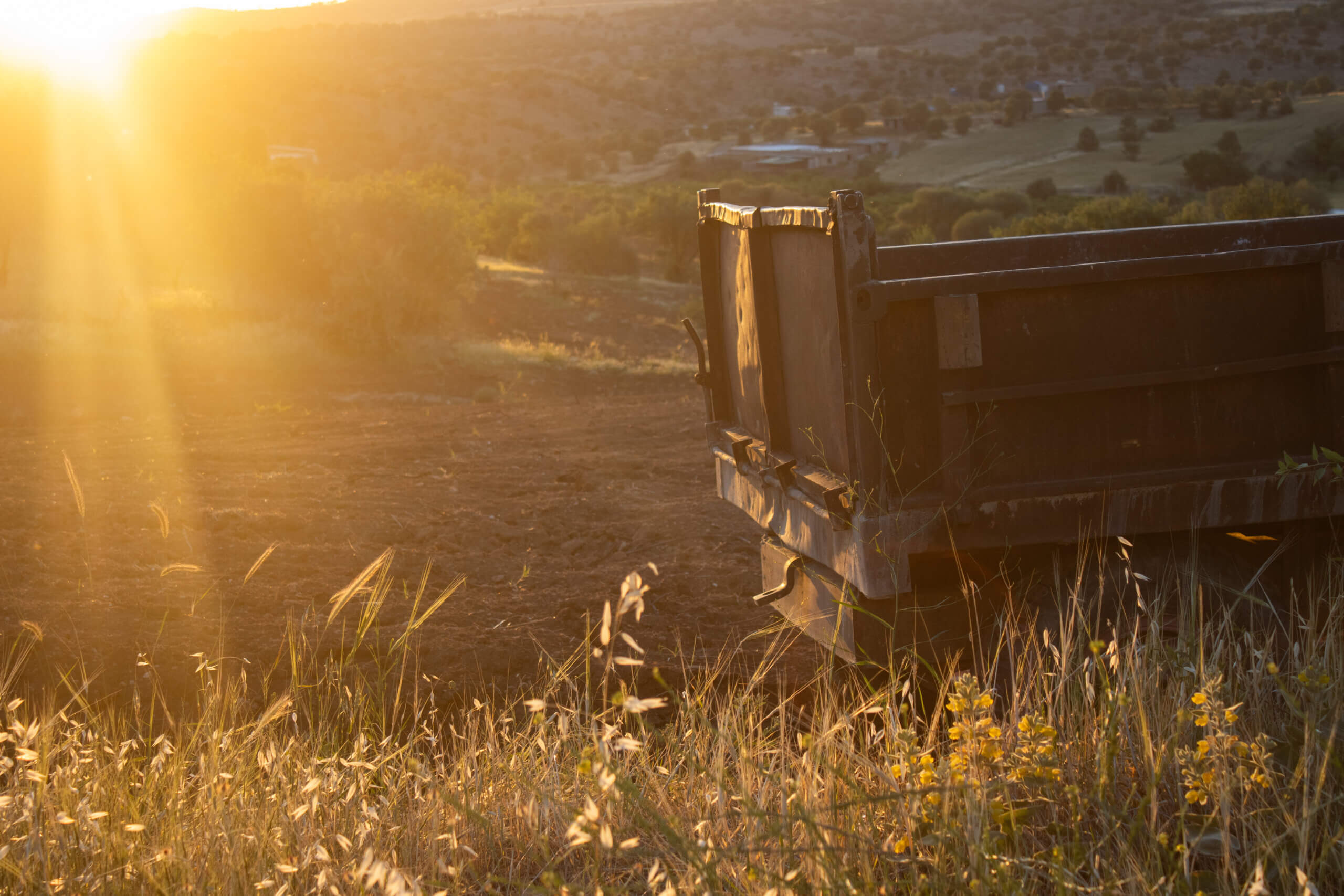
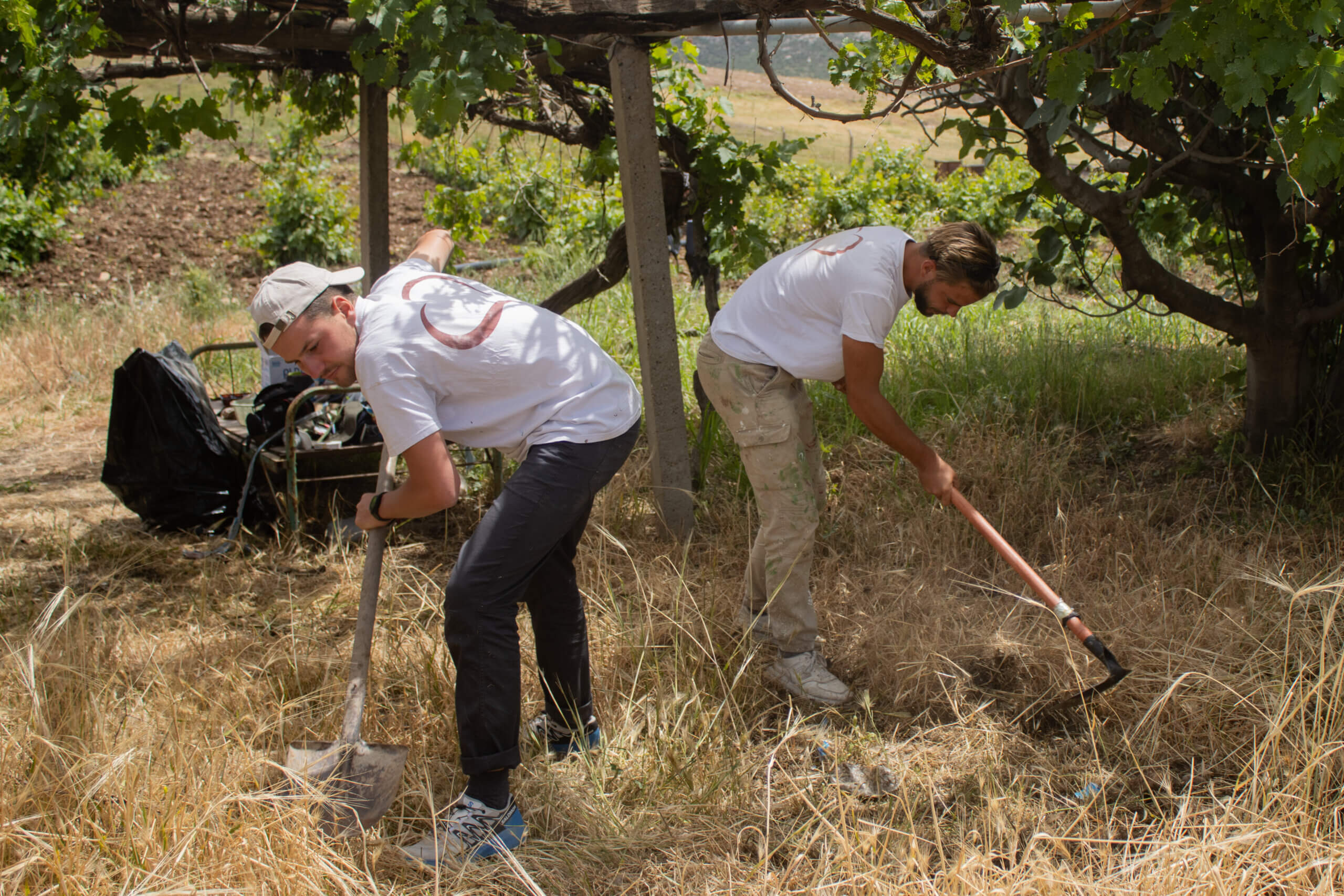
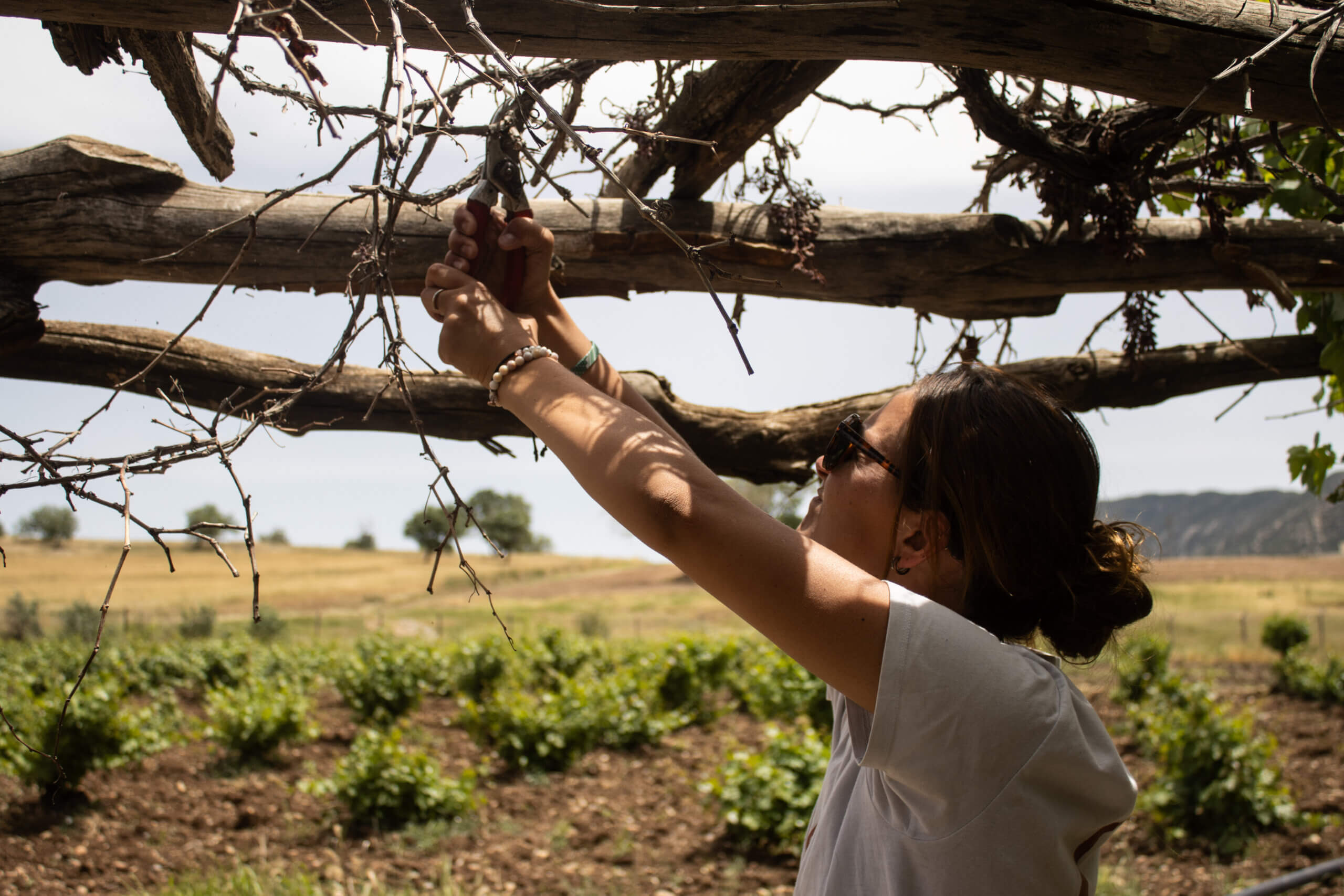
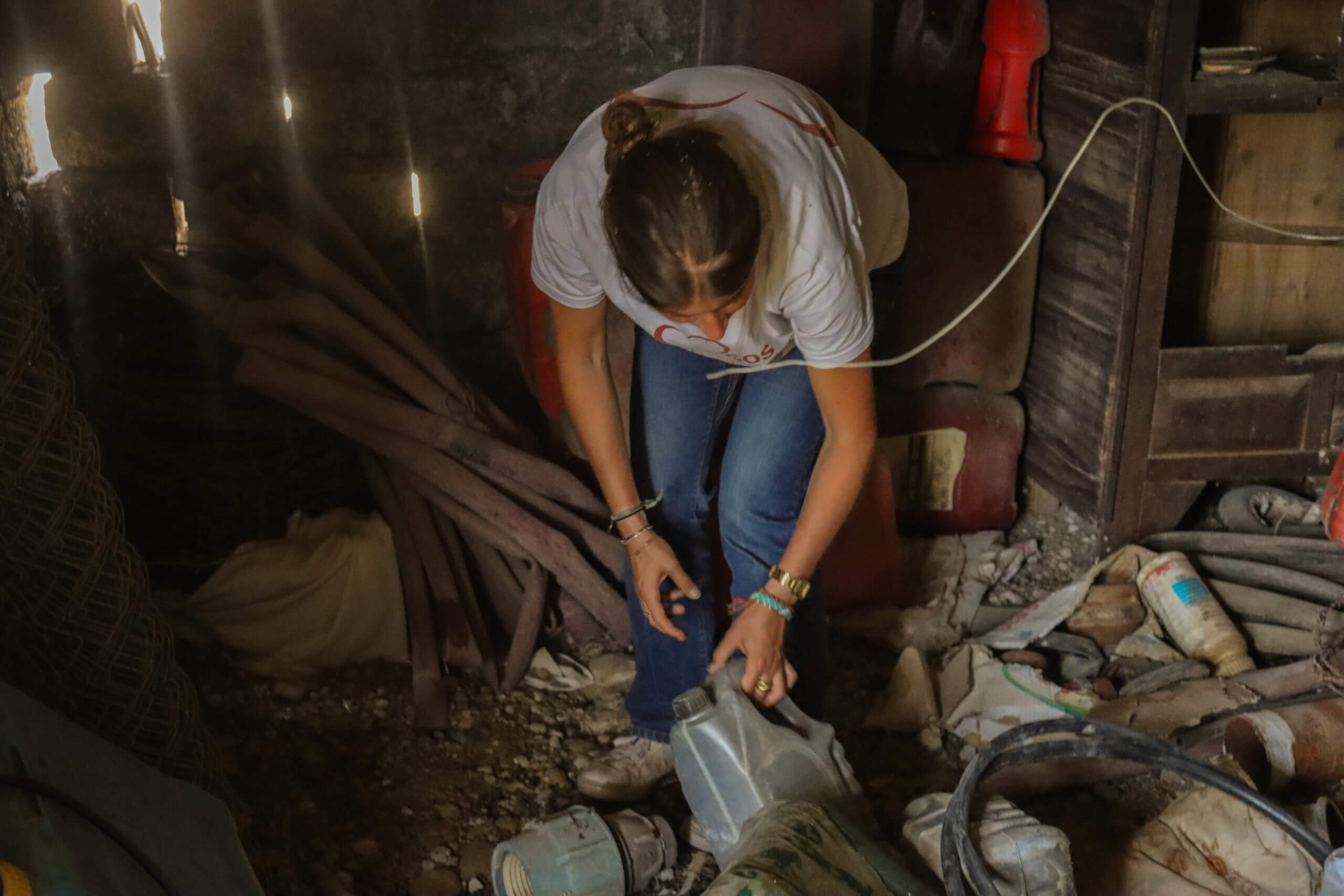
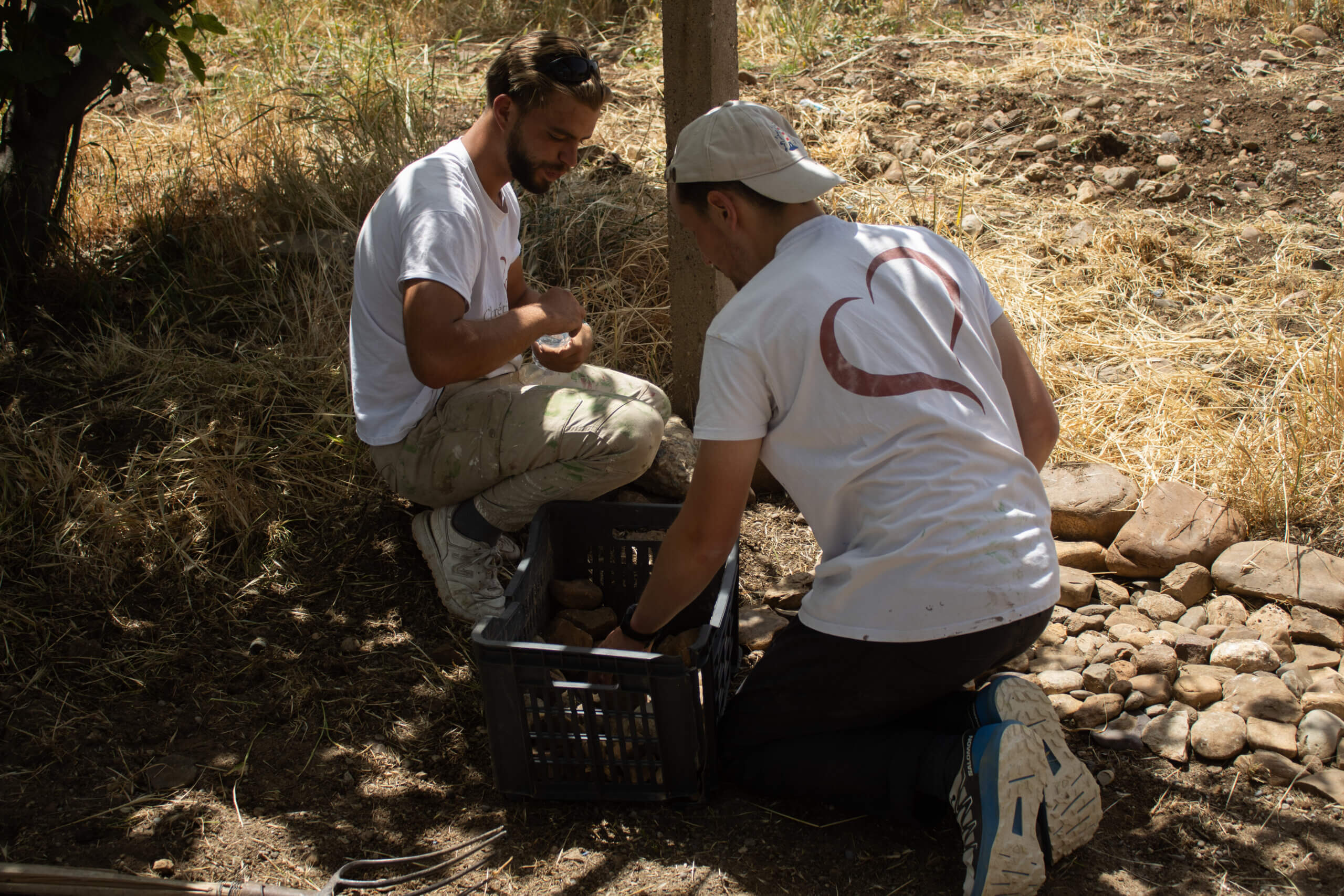
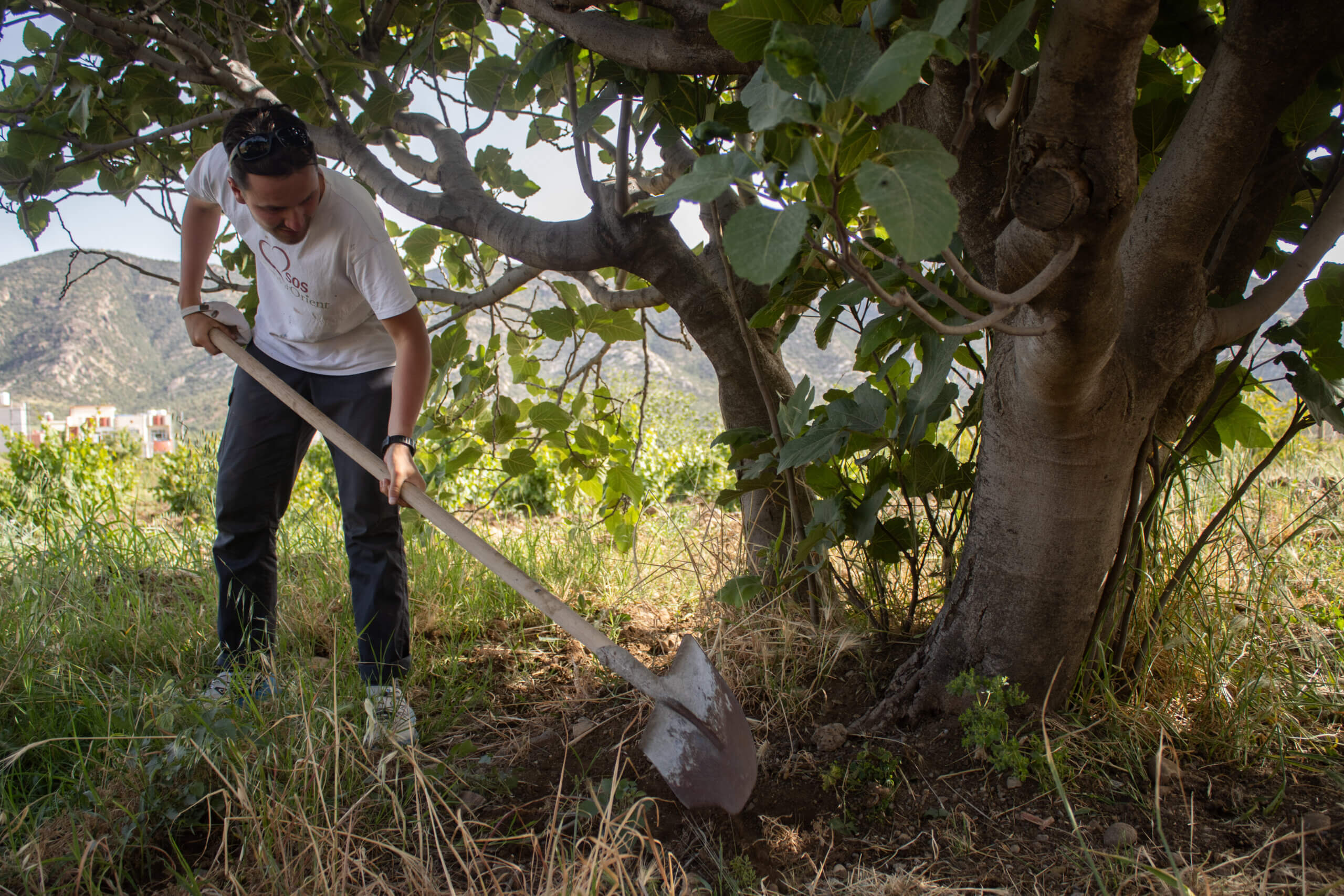
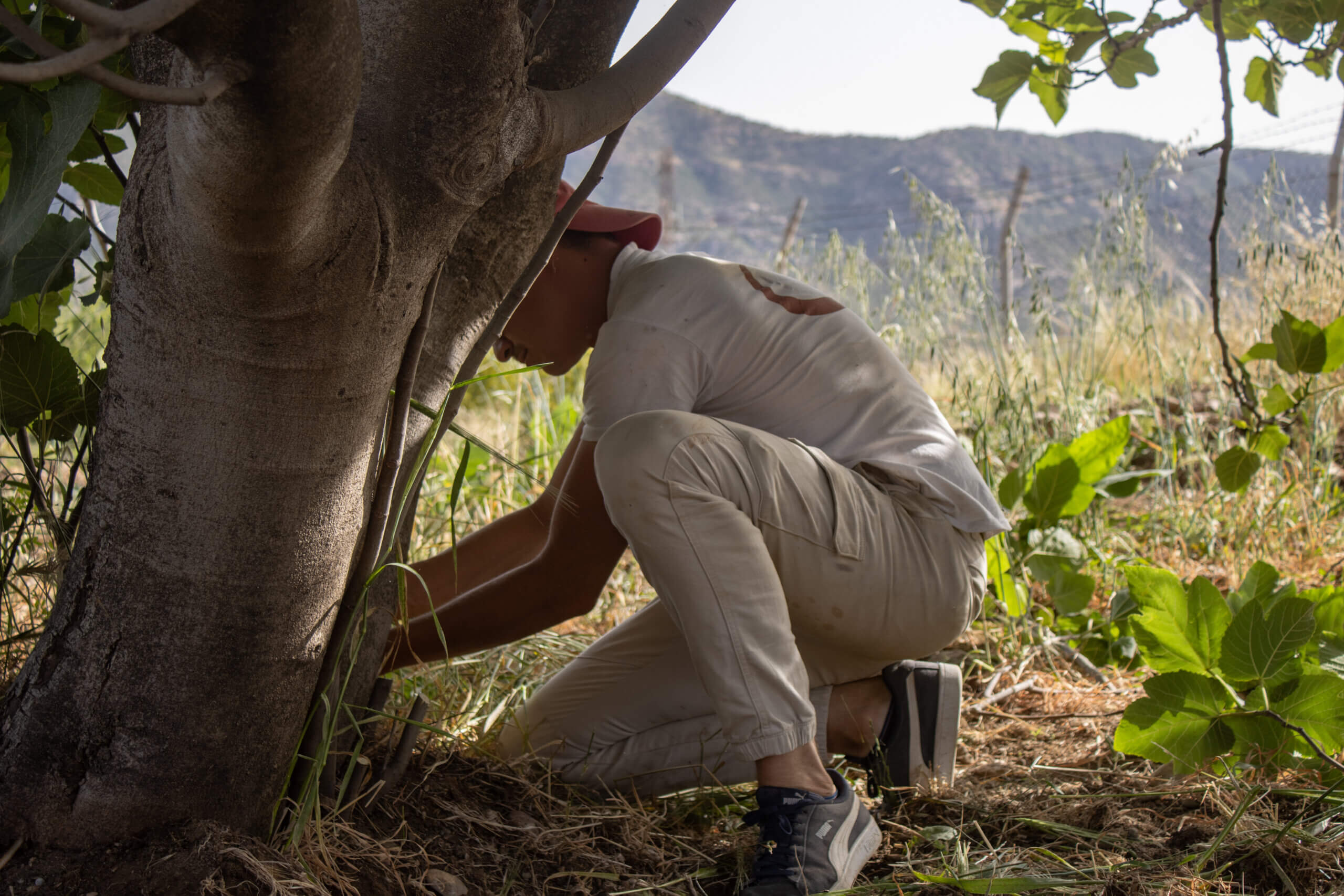
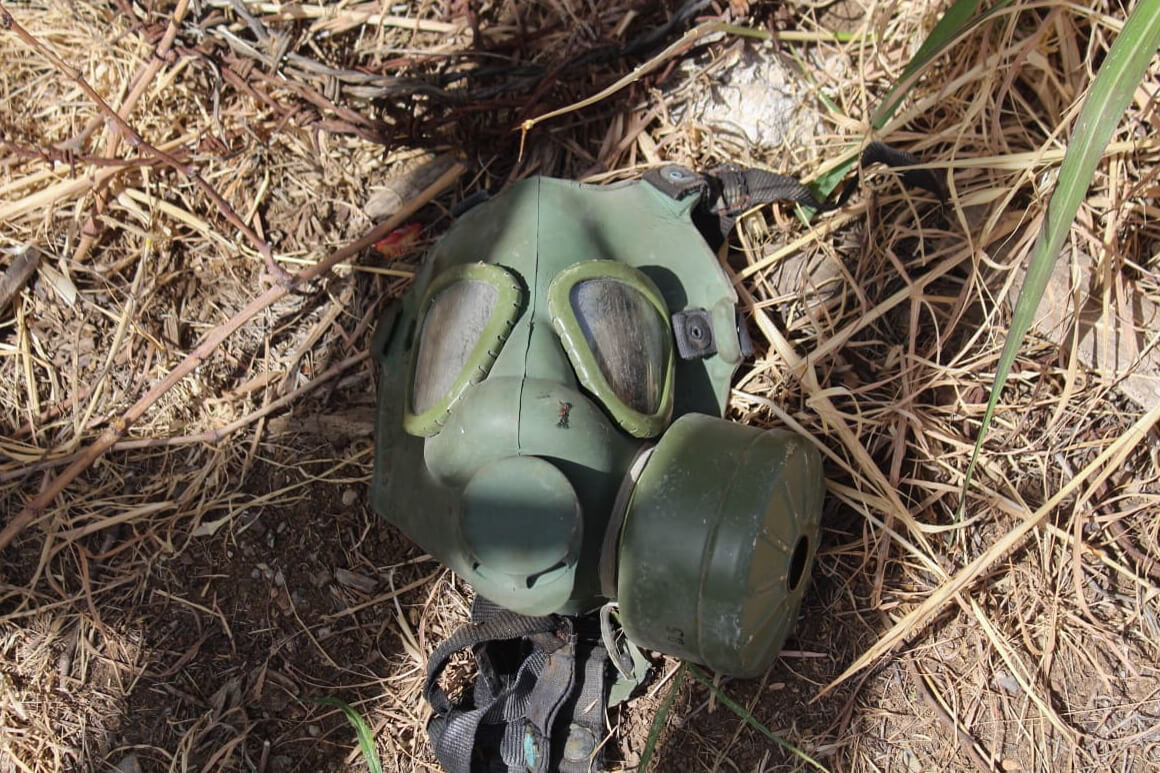
Volunteers worked hard in the orchard of Levi, a local farmer from Mangesh villange in Iraq.
Just before ten, we set off on foot under the blazing sun. Our destination: the small plot of a neighbour who had kindly asked for our help. Moments after arriving, we were greeted by Levi himself, smiling on his old red tractor, noisy enough to alert the whole valley.
Our task was clear: install an irrigation system for a hundred apple trees. With hoses and taps in hand, Levi patiently demonstrated the setup. At the base of each tree, we had to fix a perforated hose fitted with a valve — ready to release water when the summer heat strikes hardest.
It wasn’t easy work. The fittings required strength, and careful measuring between trees was needed to ensure accuracy. But with Levi’s guidance, we got stuck in — spreading out across the orchard rows to make quick progress.
Two hours later, Levi called for a break. We settled in the shade, and he generously brought out cold water, strong coffee, and some delicious home-baked biscuits.
During this pause, we got to know Levi better — a kind-hearted, quietly resilient man. He shared his story: he is the last Christian farmer in Mangesh. His presence here carries history and quiet defiance.
After a short while, Levi disappeared — only to return with a steaming pot of biryani. We were taken aback by his generosity. The meal — fragrant rice with chicken, raisins, and peanuts — was both hearty and humbling.
Determined to return the favour, we helped him tidy his shed. Among old tools and empty drums, we stumbled upon gas masks. Levi explained they belonged to his father, kept from the dark days of Saddam Hussein’s regime, during the genocidal Anfal campaign against the Kurds.
That moment reminded us just how deep the layers of a place and a person can run.
After a few more hours of cleaning and conversation, we headed home, exhausted, grateful, and more committed than ever to working alongside this extraordinary man.
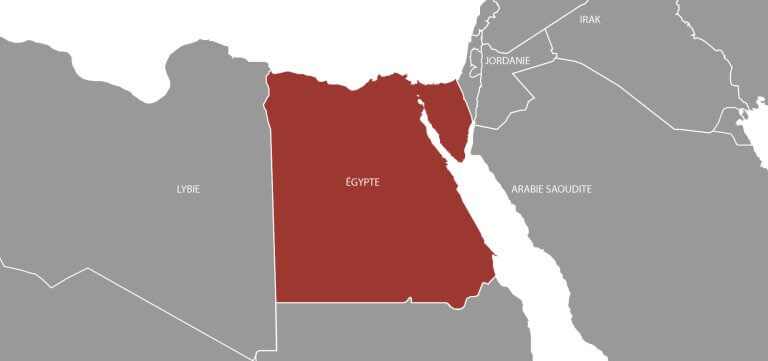



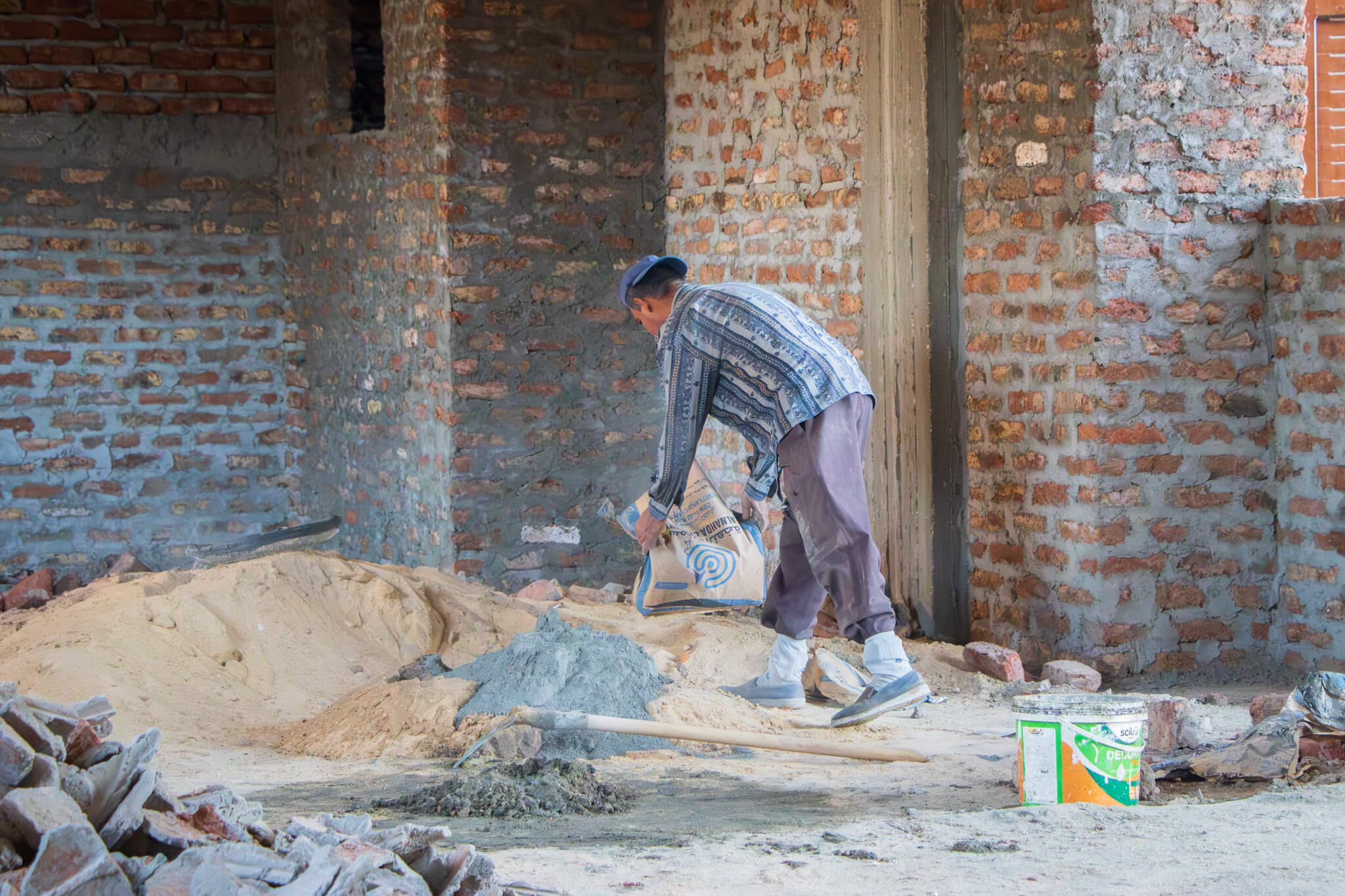
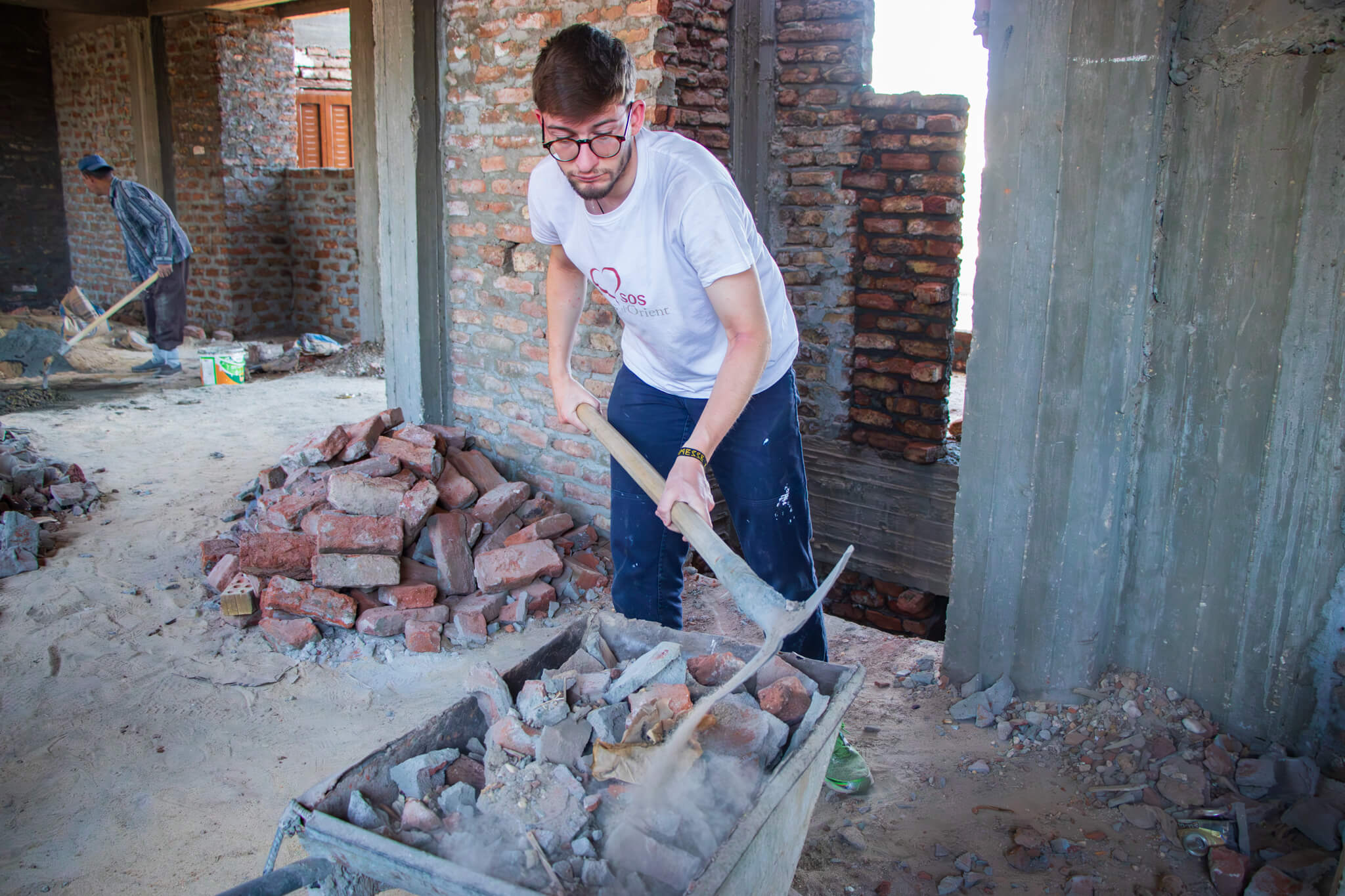
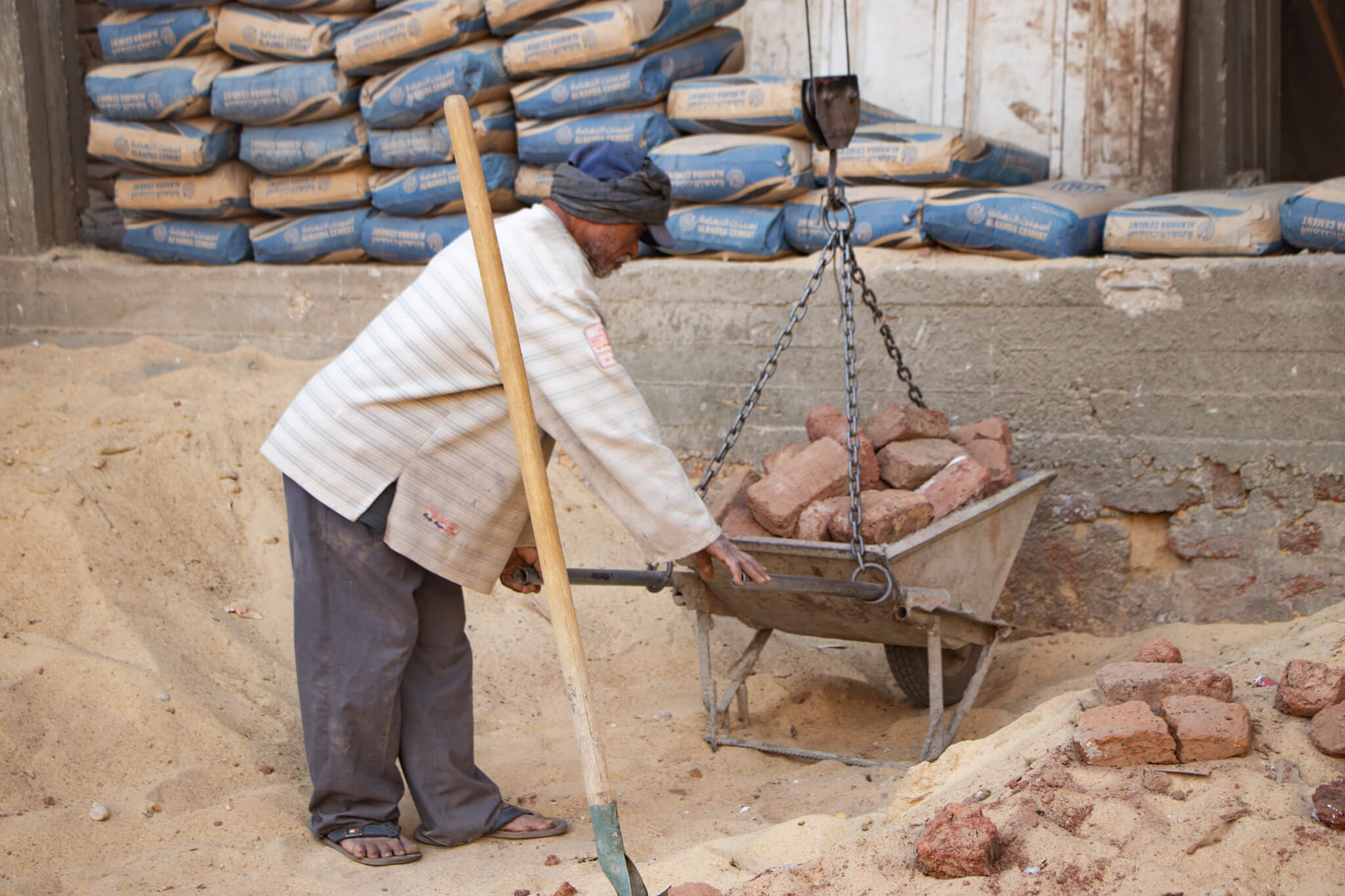
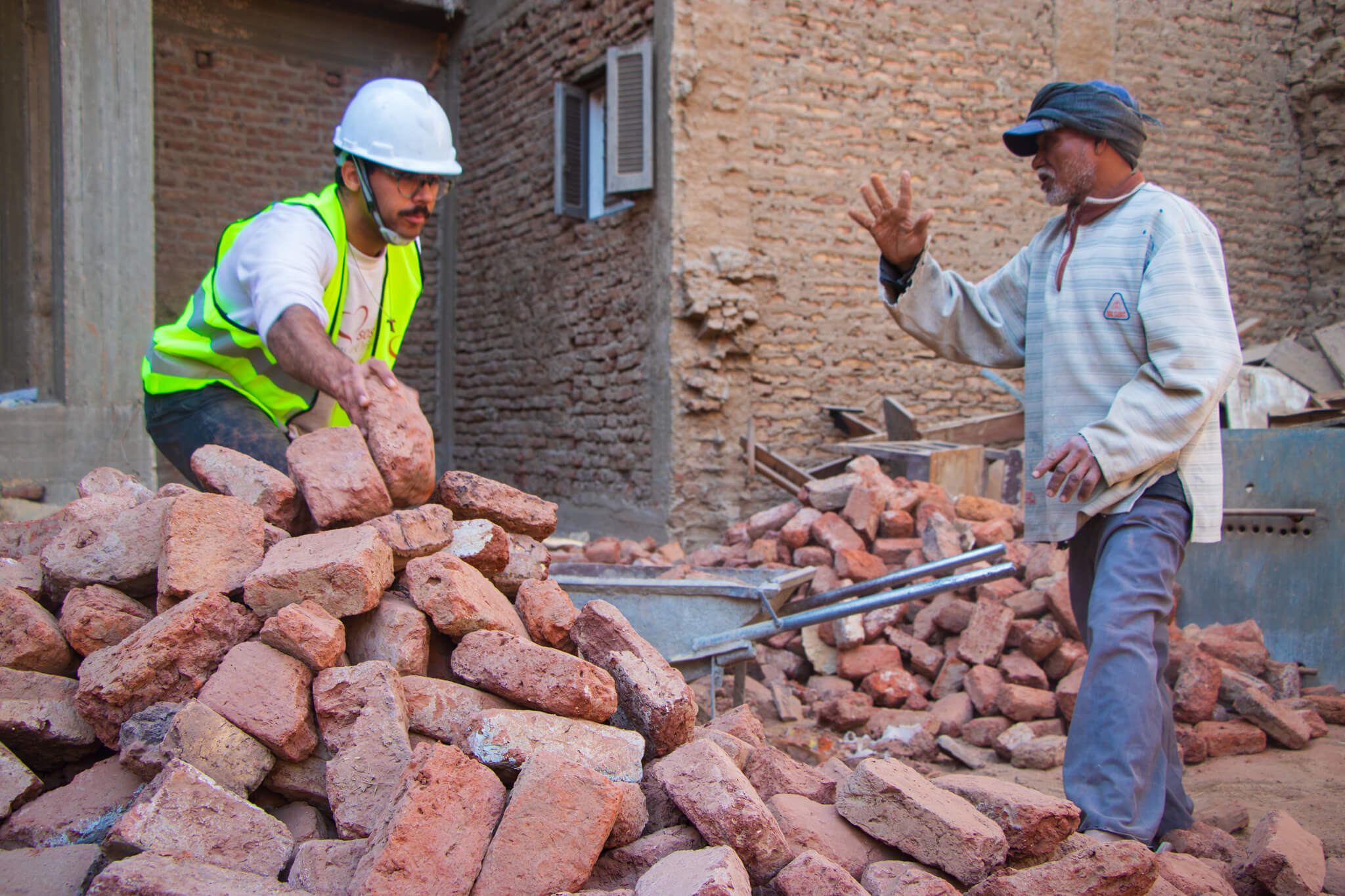
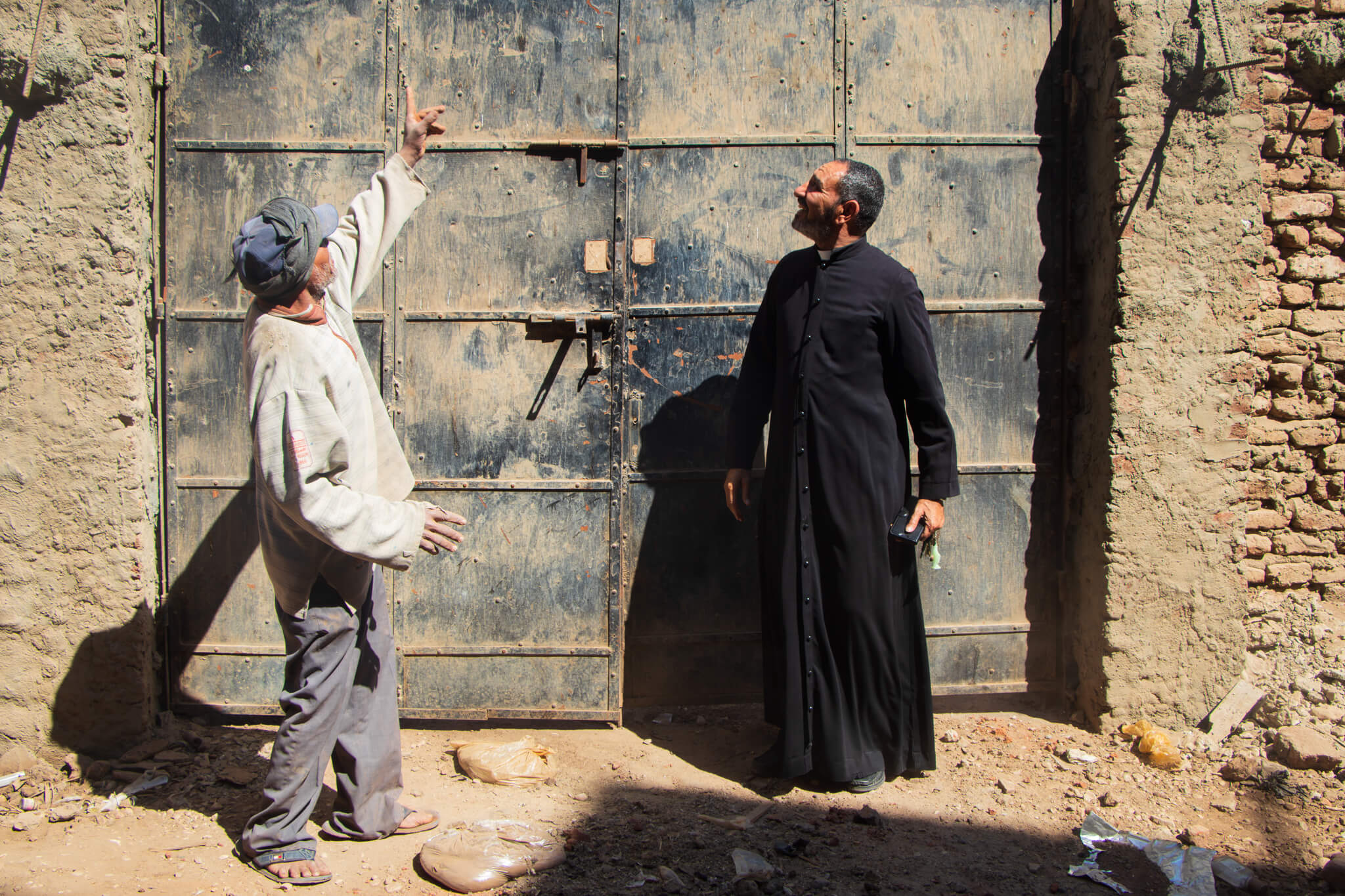
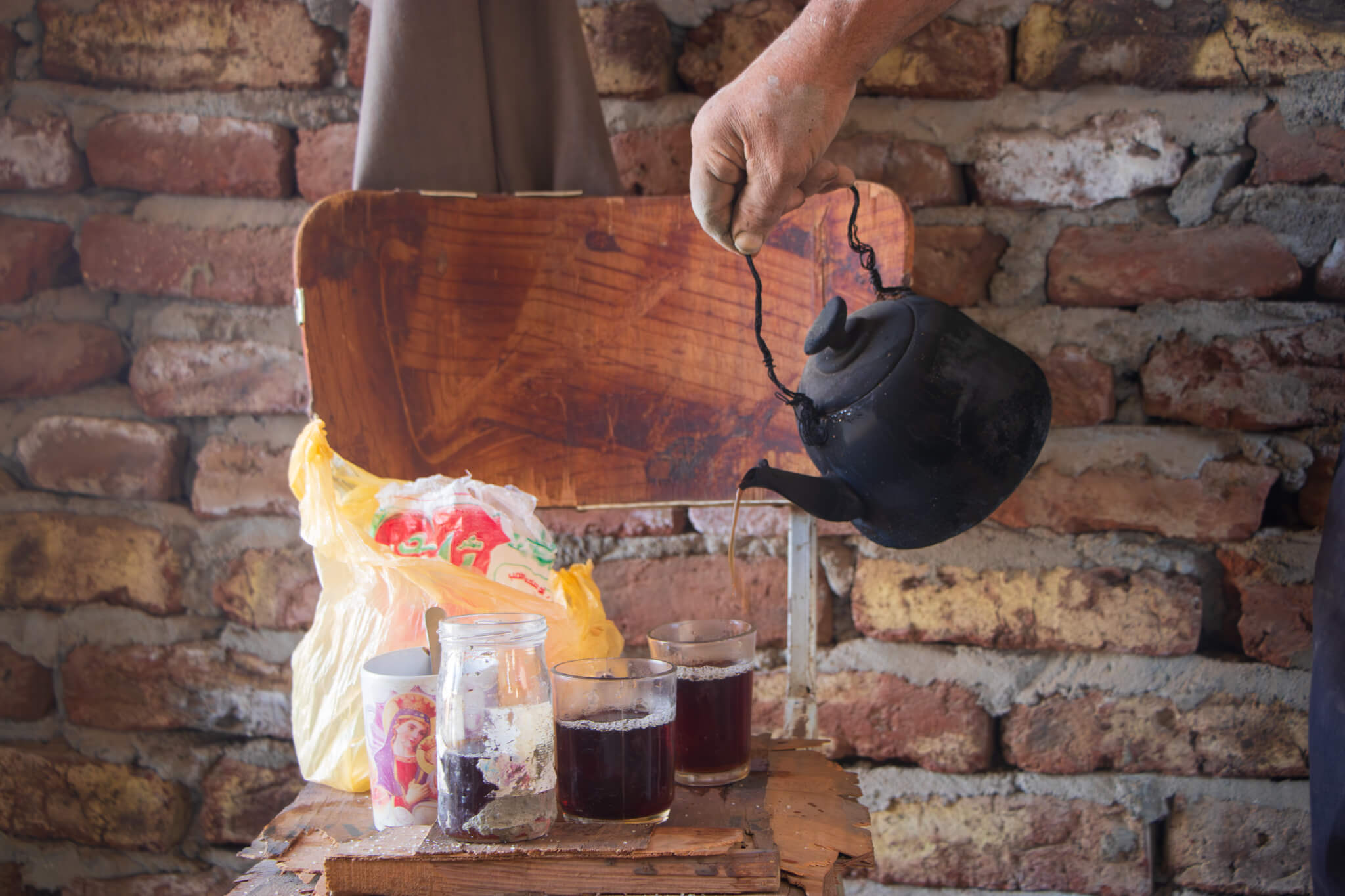
Luxor is famous for its ancient wonders, Nile views, and glossy tourist streets. But just beyond the postcard scenes lies Sawaky, a neighbourhood tourists seldom visit.
Here, the buildings are made of bare brick, next to quiet alleys without fanfare. There’s no hidden grandeur, only the quiet struggle of daily life. Poverty, unemployment, lack of training, and a severe shortage of healthcare mark the area.
And amid all this, the Church stands firm. With support from SOS Chrétiens d’Orient, Father Paulo, the parish priest of the Holy Family and Saint Joseph, is overseeing the construction of a five-floors community centre. It will host everything from catechism and scout meetings to vital social services and two full dispensary floors.
Today, volunteers are here to lend a hand.
The workers are already well into their tasks. We shout up from the street for the entrance key, tucked behind a city-side sheep enclosure. Getting in isn’t easy. A stubborn ram charges anything that moves. One of us grabs its horns, another holds the goats at bay, while a third finally breaks through the lock.
Inside, we climb up the two completed floors. On the ground level, bricks are being sorted by shape and size. Usable ones are loaded into wheelbarrows, hoisted to the upper floors with a pulley, emptied, and returned. Ciment is mixed in the sand by hand. Higher up, a seasoned builder balances on old bricks, guided by a single plumb line, laying stone with calm precision.
Everyone here has their part — it’s a well-rehearsed dance. But extra help is always welcomed. At first, we watch and learn. Then we find our rhythm: shifting bricks, sieving sand, sending wheelbarrows skyward.
Time slips by. It’s only when a makeshift fire is lit and tea is passed round that we realise how much we’ve done: two heaps of bricks sorted, nearly two walls up. The tea is strong, the moment quiet — shared with new friends and calloused hands.
We leave with aching limbs but full hearts. One thing’s for sure: we’ll be back. This centre is more than bricks and ciment — it’s hope that will change many families’ lives.
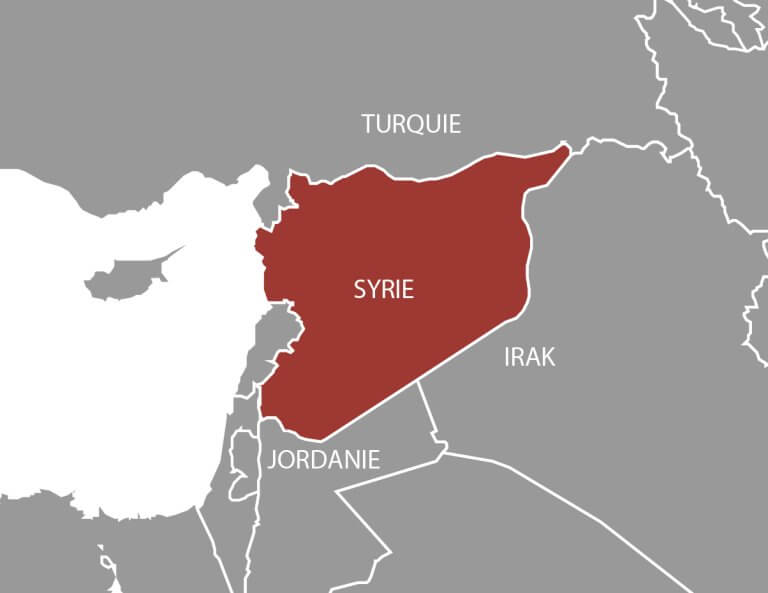


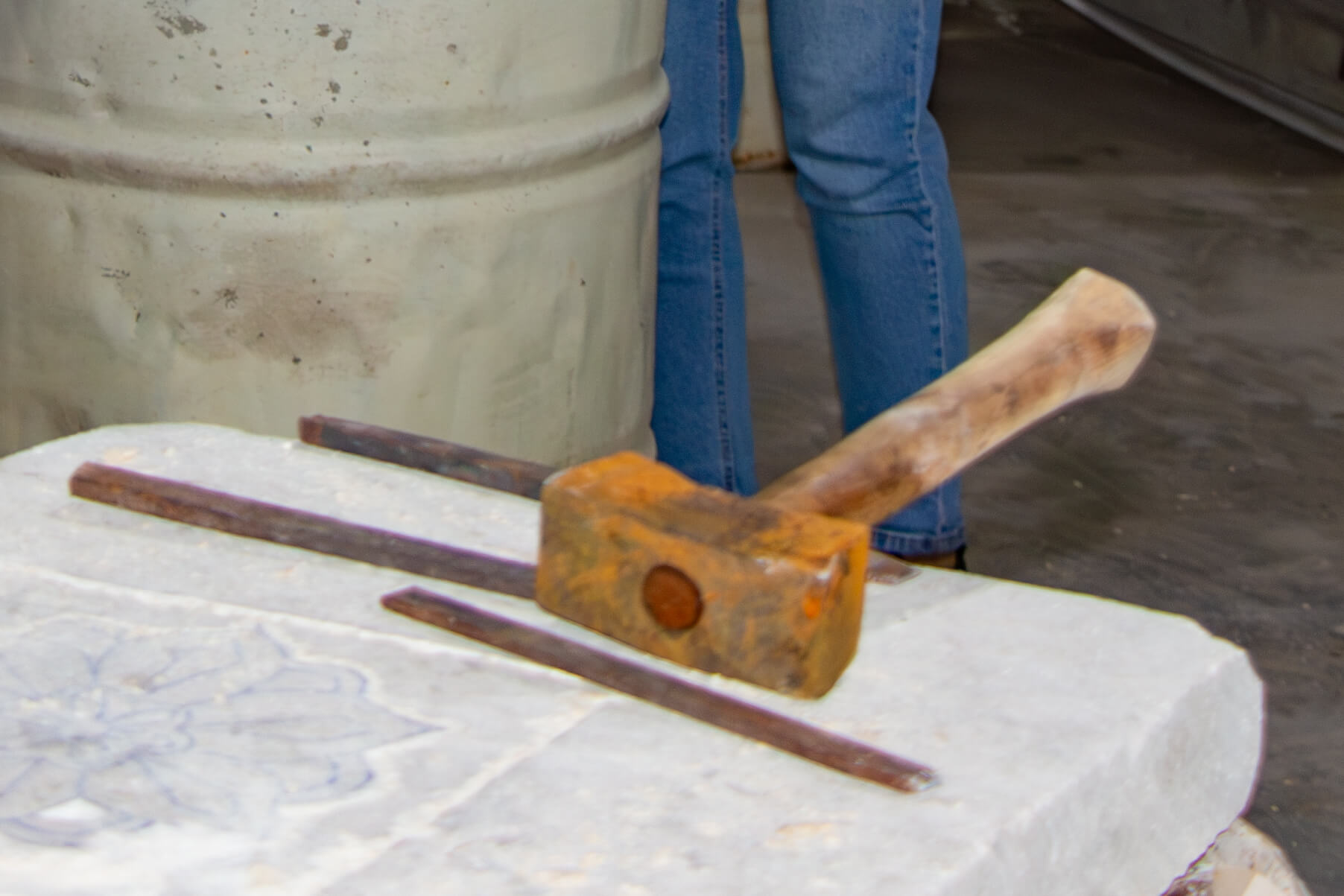
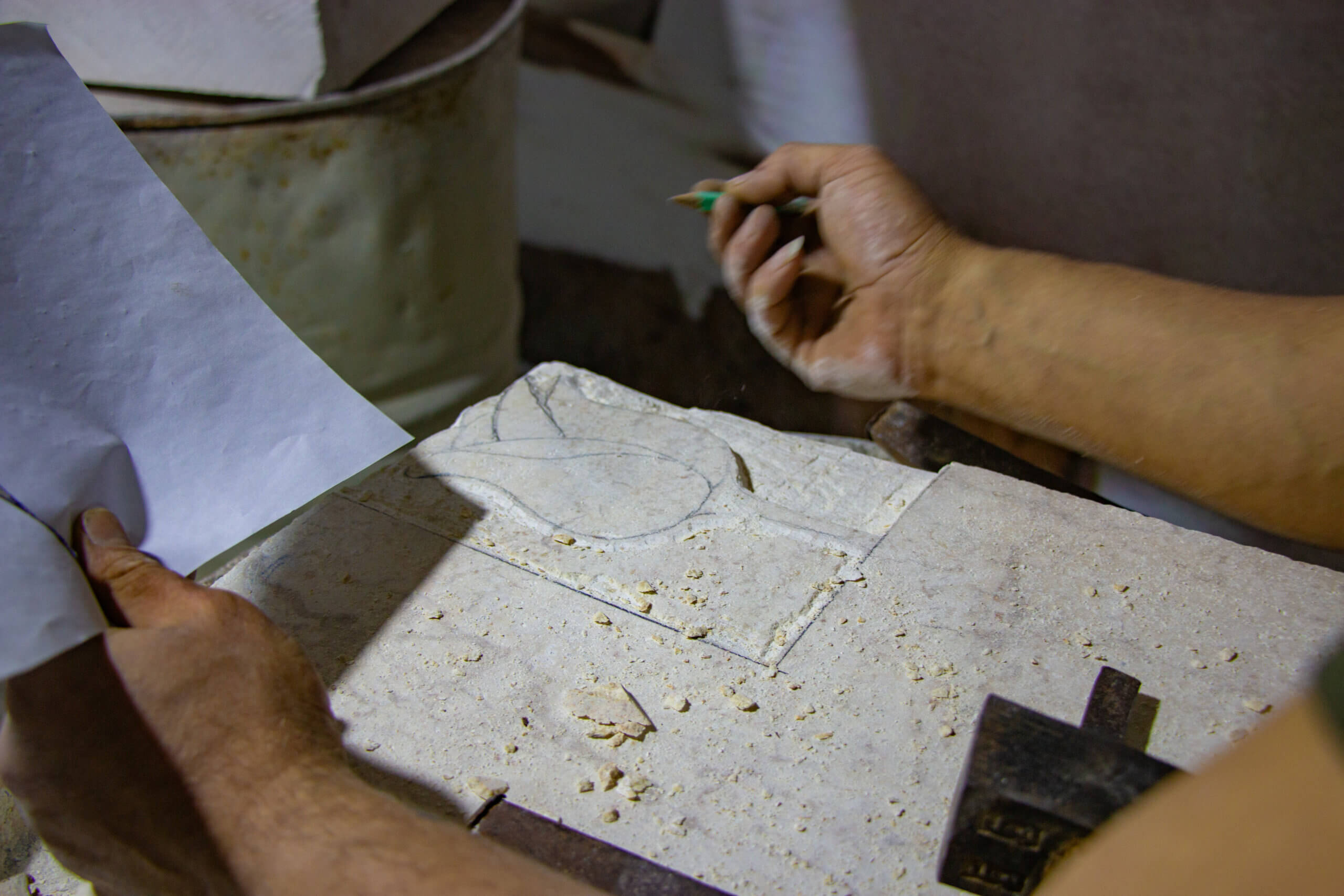
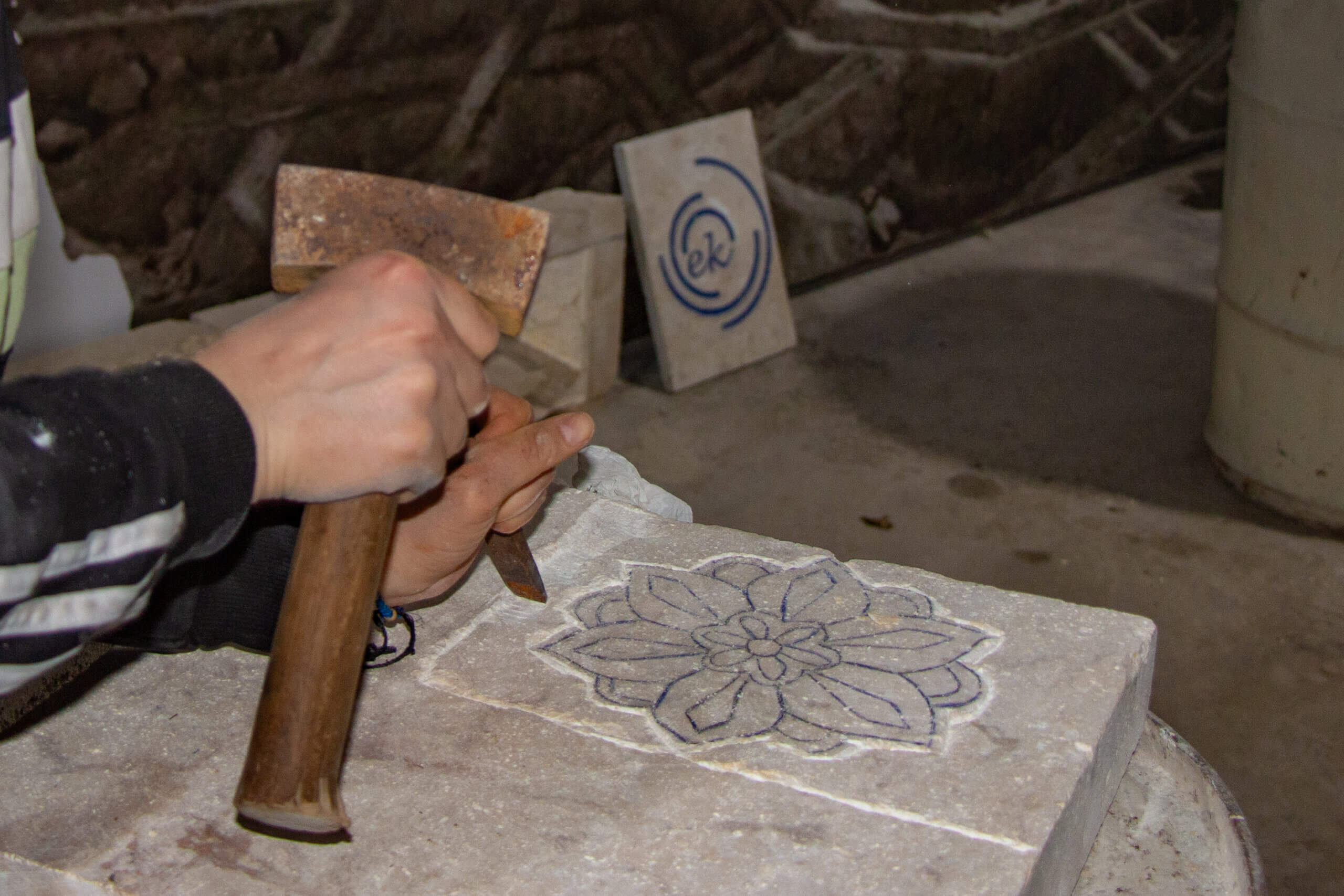
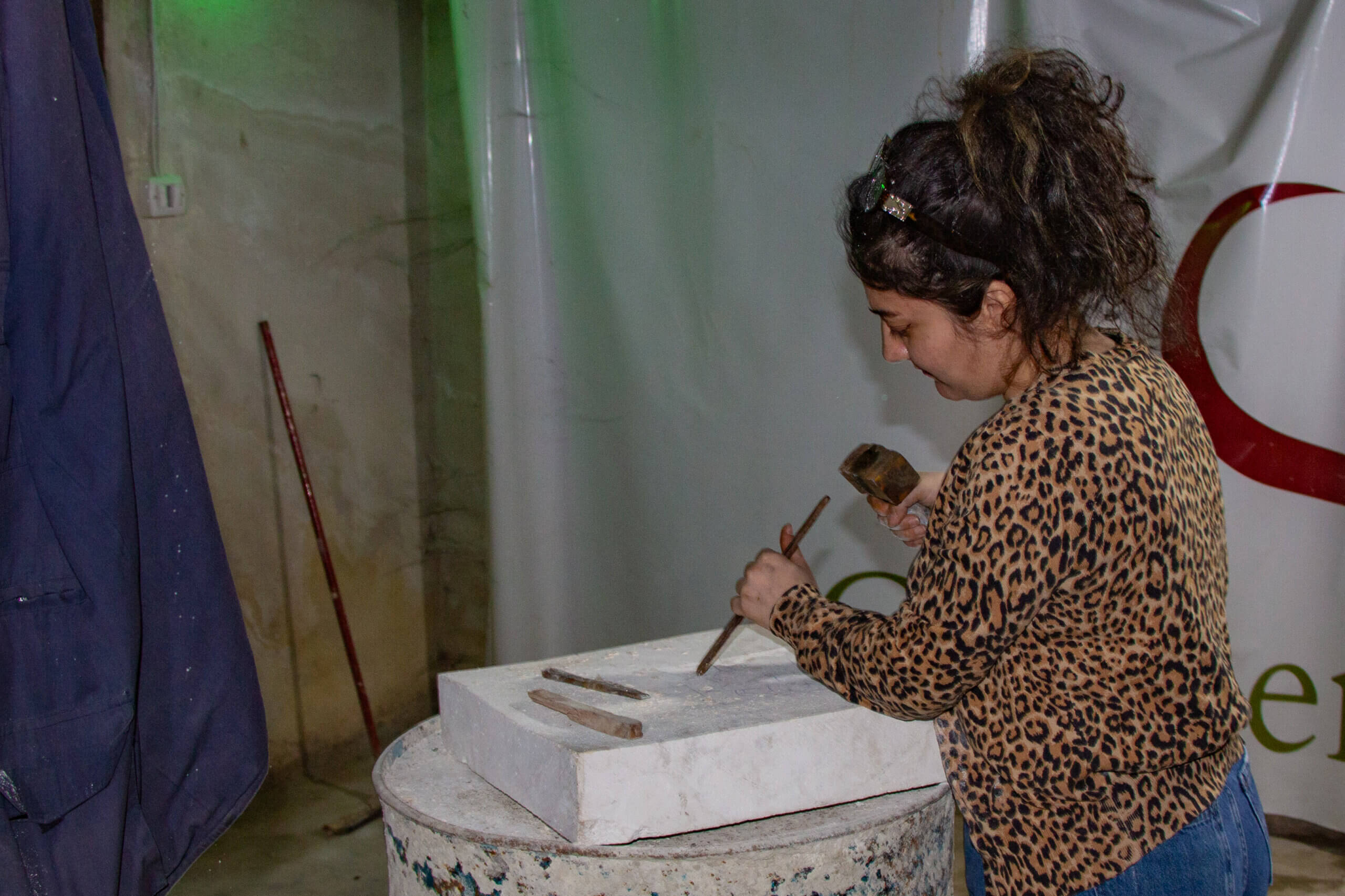
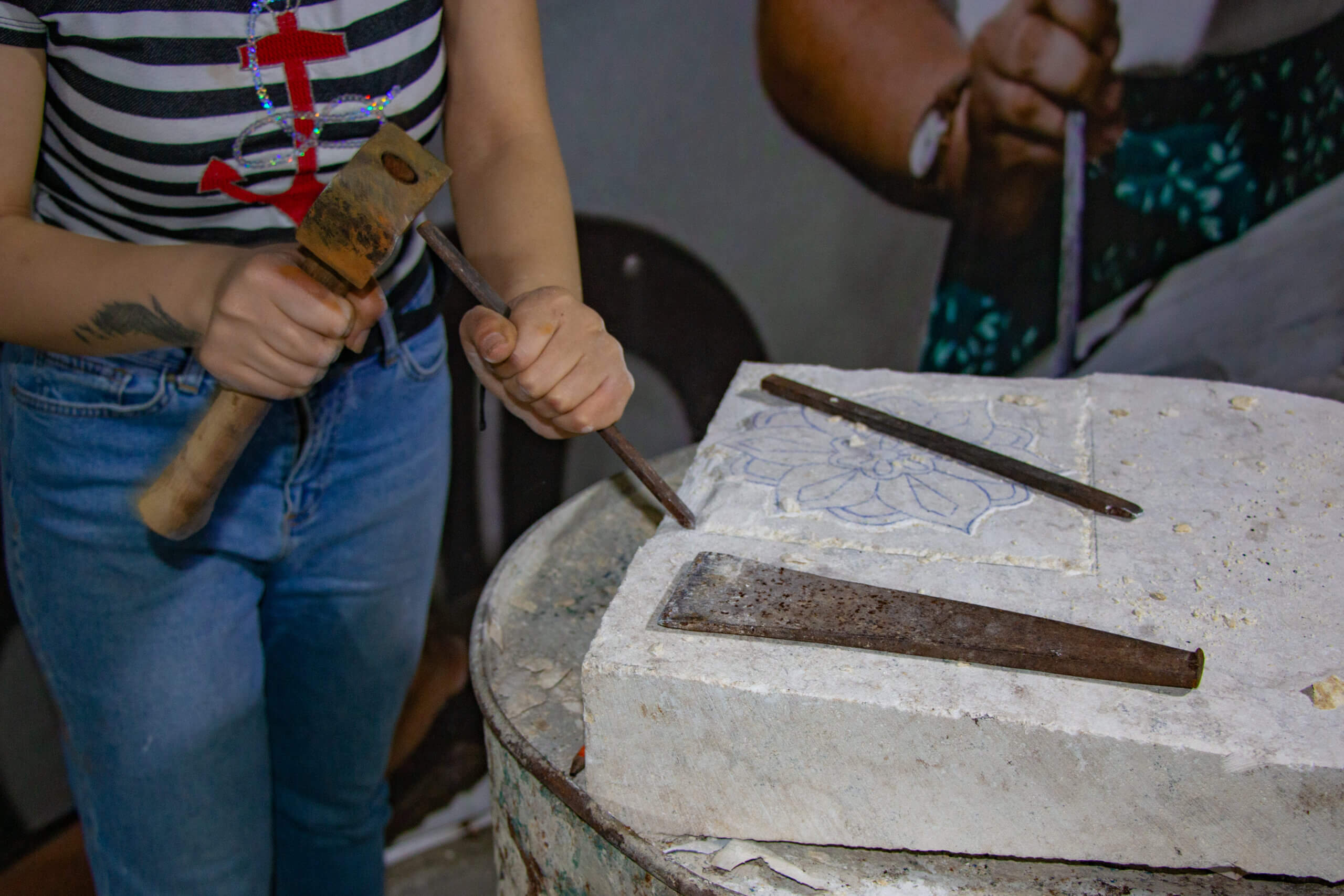
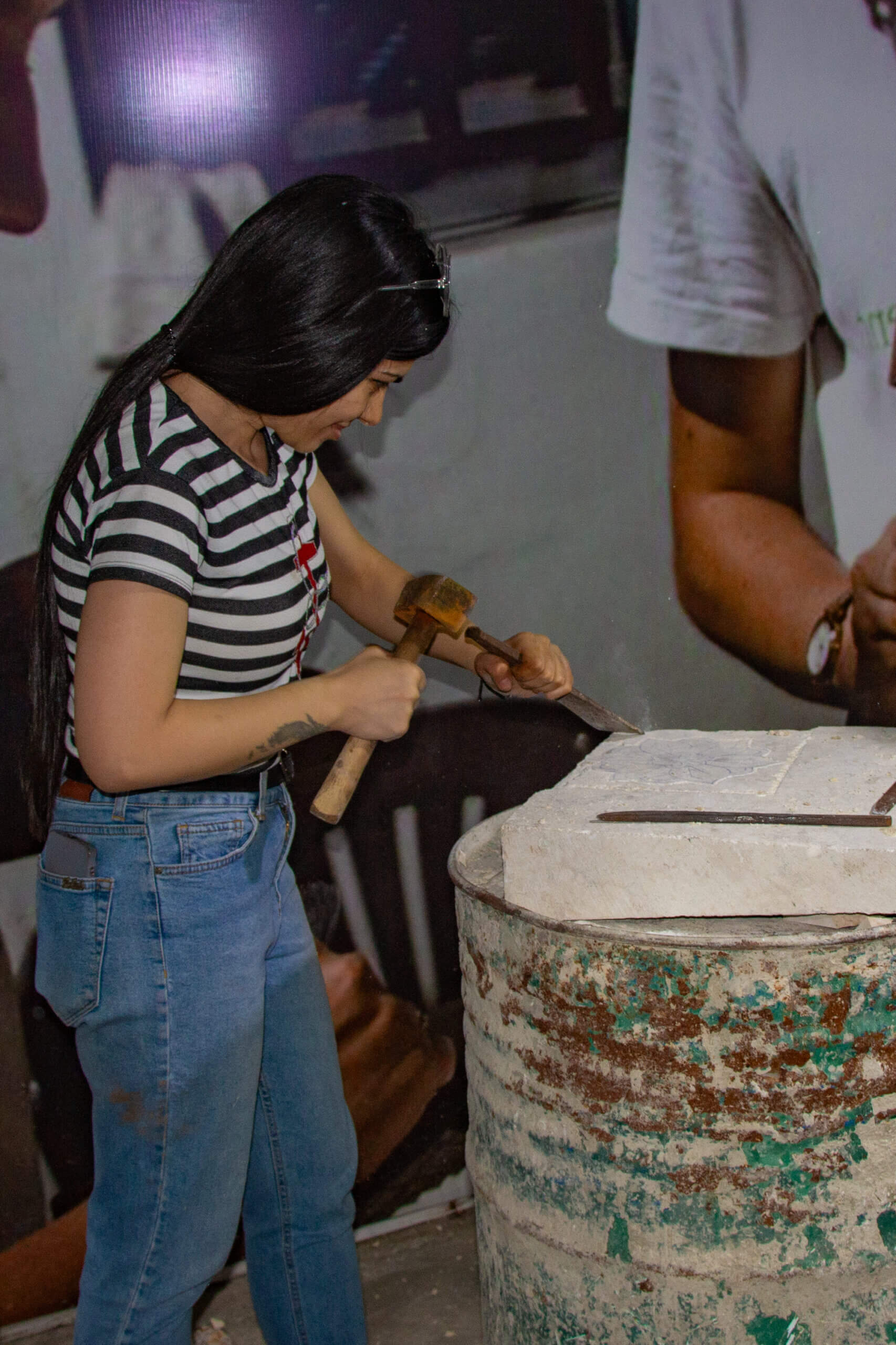
Before we even stepped inside, the rhythmic clang of hammer on stone echoed down the stairwell, a percussive melody of craftsmanship.
Inside the workshop, a quiet reverence fills the air. Each student, mallet in hand, learns to coax life from blocks of limestone using only patience, precision, and a few simple tools: a chisel, a hammer, and a lot of heart.
Guided by master carver Mr Jony, the class — men and women alike — gather around old metal barrels serving as makeshift benches. It’s here they learn to breathe form into stone.
Designs are carefully sketched onto the blocks: religious symbols, delicate floral motifs, abstract shapes. Bit by bit, the images emerge from the chalky surface under the careful hands of the sculptors.
The room is quiet, save for the tap of tools. One young woman is fully focused, tracing the lines of her pattern. A student next to her compares his sketch to the rising contours of the relief he’s chiselling. Dust hangs in the air like smoke from a fire. A flower blooms in one corner; a cross takes shape in another.
Each piece is unique, a personal creation. Some carve keys, others instruments, logos, or sacred emblems.
For two hours each week, over nearly two months, they return to their stones. And slowly, they shape not just limestone but hope.
The room is humble: exposed concrete, old posters, and photos of past artisans line the walls. But within it, an ancient skill is kept alive, passed from one pair of hands to another, soul to soul.